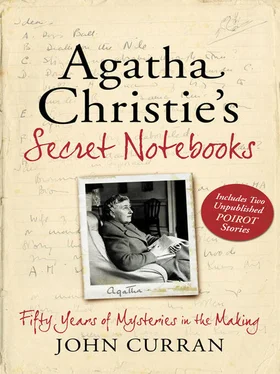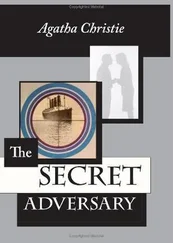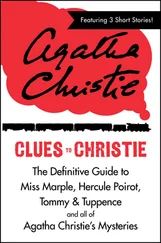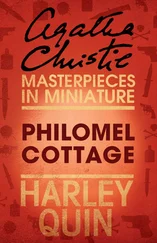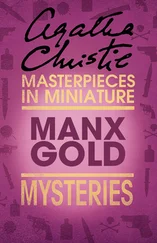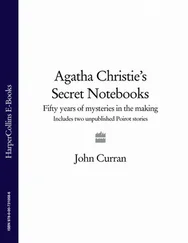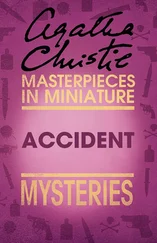8. A dour young man G. [Carl Reiter]
The wife—very queer—Is she being doped against her own knowledge? Atmosphere gradually develops of intensity—a bomb may explode any minute
It is a pity there are not more detailed notes for the plot mechanics, especially in view of Christie’s reminder to herself at the start of the following extract:
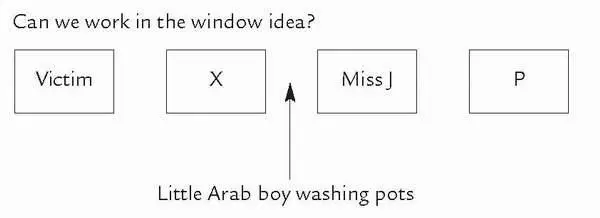
The ‘window idea’ is undoubtedly one of her most ingenious and original ploys, and like all of her best plots it is so simple—in retrospect. That said, when Miss Johnson stands on the roof in Chapter 23 and says ‘I’ve seen how someone could come in from outside—and no one would ever guess,’ this is not exactly the truth. It would have been more strictly accurate to say ‘I’ve seen how someone could commit this murder—and no one would ever guess.’ The murderer did not come in from outside—he was already present; and although Miss Johnson realised how he had managed to commit the murder without ever leaving the roof, this is not the same thing.
And despite the reference to the vital ‘window idea’, the accompanying diagram is not really relevant to it as it represents part of the ground floor plan of the Expedition House, although a different one to that included in the finished novel.
Although Christie experimented briefly with other possible killers, the front-runner always seems to have been the one eventually unmasked:
Possible gambits—Mrs. L’s past life—Some man she has injured—husband or someone she betrayed—hate her—pursued her—she gets more and more nervous
Development
A. Mrs. L is killed
B. Somebody else is killed in mistake for her—really she engineers it and persecution story is an invention
Dr. L murders Mrs. L
Then a second murder—someone who knew something—Miss Johnson?
Miss J original wife—her revenge?
Or—a trumped up story by wife—and husband killed?
Or Dr. L the villain
Murder in Mesopotamia misses being a first-class Christie due to the unbelievable revelation, during Poirot’s explanation, of an unsuspected relationship. The mechanics of the murder are extremely ingenious, the setting and the characters are better drawn than usual and the identity of the killer is undoubtedly a surprise. But the reason for the crime beggars belief; how Christie (or her editor) ever thought this was a likely, or even a credible, scenario is difficult to imagine. Apart from the intrinsic dissatisfaction, it also spoils one of the few examples of Christie’s attempt at the ‘impossible crime’. This is a sub-genre of the detective novel where the interest lies not only in the identity of the killer but also in the means by which he committed his crime. In the ‘impossible crime’ detective novel victims are found in the middle of snow-covered lawns with no footprints, in a room under constant observation (as here) or a room with all the doors and windows locked from the inside. Her great contemporary John Dickson Carr, Master of the Locked Room, brought it to full flower. When it is a feature of a Christie plot it is almost as an afterthought; it was never the main focus of her plot. She used it in only three other novels— Hercule Poirot’s Christmas, Why Didn’t They Ask Evans? and Curtain —as well as a handful of short stories.
Finally, Notebook 47 reveals that Christie considered using Murder in Mesopotamia as the basis for a play. However, she rejects the idea of using the novel’s characters or plot as a basis (despite the ‘troublemaking attractive woman’, a similar character to Mrs Leidner) in sketching a possible scenario:
Play on a dig? Possible characters from Murder in Mesopot[amia]
Director American—with a troublemaking wife—in love with a troublemaking attractive woman—widow of an inventor—or atom scientist—imprisoned for Communist activities—(after Hiss idea?) Ten years ago—he’s in prison—she has divorced him—in love with Deirdre? Married to him—is Really on point of having affair with middle-aged architect—two doctors from medical conference Baghdad come along—one a friend of expedition—the other a plastic surgeon—he gets killed—then she does
Alger Hiss was a US State Department official accused of spying and jailed in 1950, but for perjury. His guilt or innocence of the spying accusation is still a matter of debate. He died in 1992.
The above outline seems an unlikely subject for a stage play, but some of these ideas did eventually turn up in Destination Unknown.
Appointment with Death 2 May 1938
The appalling Mrs Boynton terrorises her family even while they are on holiday in Petra. When she is found dead at their camp more than one person is relieved. Hercule Poirot, while sympathising with the family, has 24 hours to find the killer.
There are notes for both the novel and stage versions of this title. Over 60 pages of notes for the latter are contained in four Notebooks and 20 for the novel in Notebook 61, just ahead of preliminary notes for Hercule Poirot’s Christmas and extended notes for Akhnaton. Although published in May 1938, there was an earlier serialisation that January in the Daily Mail, where it was called A Date with Death, and it appeared at the end of the previous year in the USA. In an essay heralding the serialisation of the novel, Christie wrote that three points of this case appealed to Poirot—the 24 hour deadline, the psychology of the dead woman and the fact that he was asked to investigate by a man with a passion for the truth similar to his own, Colonel Carbury.
In Appointment with Death Christie sets herself another technical challenge. The investigation takes place in just 24 hours (although the set-up takes considerably longer) in the spectacular setting of Petra, far removed from the facilities of Scotland Yard. There are no fingerprints, no outsiders, no Hastings; just Hercule Poirot and the suspects—although it has to be said that parts of the solution can be explained only by divine intervention—for example. how can Poirot know about the earlier life of the killer? Tellingly, when Christie adapted this for the stage she completely changed the ending and presented the audience with a more plausible and psychologically compelling solution.
The first page of Notebook 61 is headed ‘The Petra Murder’. This is immediately followed by a list of characters and brief descriptions, whose forerunners can clearly be seen in the notes for Death on the Nile (see Chapter 6). The name Boynton does not appear at this stage, however, and the family are referred to throughout as Platt:
Characters
Roy—young, neurotic (26?)
Nadine (22?)
Lucia—Mrs P’s own daughter?
Jefferson—eldest son
Prunella (his wife—clear, balanced hair
Sarah Grant (Sybil Grey) a young doctor—interested in mental psychology [Sarah King]
Lady Westholme M.P. (a possible future Prime Minister)
Dr Gerard (French?)
Mrs Gibson (very distraught talker)? [Miss Price]
When she returns six pages later (after a quick detour to jot down notes for ‘Dead Man’s Mirror’, Sad Cypress and Curtain ), Christie amends her characters—as usual, some are later renamed, while others do not appear in the novel—and proceeds with her system of assigning letters to scenes. She plots A to L without hesitation or deviation (which may indicate that she had already worked on this elsewhere), even though the order will change quite considerably. The novel’s opening sentence, the most arresting of any Christie novel (‘You do see, don’t you, that she’s got to be killed’), does not appear until Scene L in the notes. The fact that Poirot is mentioned in conjunction with this statement may account for its being brought forward.
Читать дальше
Конец ознакомительного отрывка
Купить книгу
